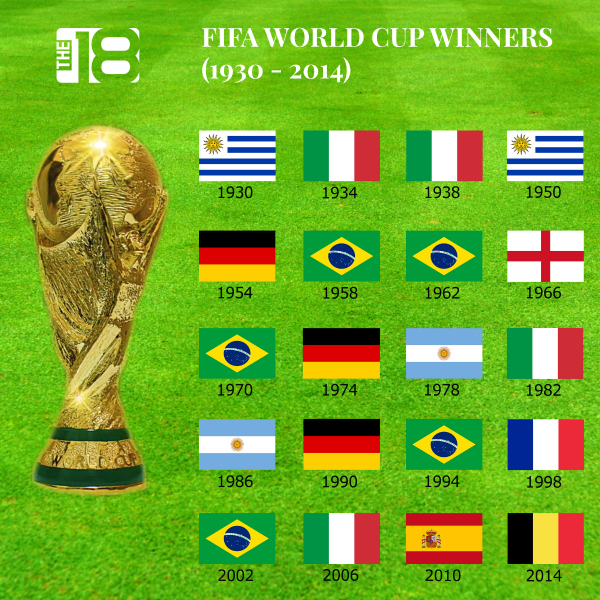The most anticipated sporting event in the world brings people together from every background, race, culture and origin. The World Cup's power has been known to stop civil war by giving hope to entire nations. So why is the World Cup every 4 years? After all, it is the most-watched sporting event in the world and you would think teams, players and advertisers alike would love this kind of visibility year in, year out.
The first and main reason why the World Cup is only held once every four years is due to the vast amount of qualification matches. In 2014, 204 nationals competed for 31 spots. There are 32 total spots, but the host nation is guaranteed a spot and commonly plays in the opening match. Depending on the FIFA calendar, in a given season, there are only a handful of international breaks. For individuals and teams playing full top flight seasons, rest and recovery are crucial over the summer break. If there were international tournaments every summer, players have a greater chance of burning out or suffering injury.
Historically speaking, when the World Cup started in 1930, it would have been extremely difficult for each team to travel across the world every year for the tournament. This is evidenced by the fact that only 13 countries participated in the first-ever World Cup in 1930: seven from South America, four from Europe and two from North America. (Most European teams chose not to participate because it was so difficult to travel to South America at that time.) Spacing the World Cup every four years prevented a headache for teams traveling by land and sea rather than air travel as teams enjoy today. The question people were likely asking in 1930 was not, "Why is the World Cup every 4 years?" It was more like, "Can we do this every 4 years?"
In fact, based on the geopolitical and humanitarian crisis caused by the second World War, the FIFA World Cup had a period between 1938-1950 where it did not even happen every four years, as the infographic below points out.

A look back at every World Cup winner shows that there hasn't actually been a FIFA World Cup every 4 years. (Infographic: The18.com)
When it comes to infrastructure, planning and construction to host 5,000,000 or more fans can be a nightmare if countries do not have proper infrastructure. According to Billboard, Brazil spent $4 billion dollars to renovate and restore the 12 stadiums that were holding the fixtures. And it looks like Russia will spend 3x that amount for the 2018 World Cup, coming in at a shocking $12 billion. Much more than stadium preparation is needed to cope with the large influx of individuals. Logistically speaking, planning to host a World Cup can easily take more than 5 years to make sure things run smoothly.
Finally, having a World Cup every four years is perhaps the perfect cadence for fans. Allowing four years to watch players who were previously under the radar blossom into international royalty is what makes soccer the beautiful game. James Rodriguez was the breakout star of the 2014 World Cup in Brazil, then became Real Madrid's big signing of the summer transfer window. Watching the Colombian National team score this goal justifies Los Blancos spending 75 euros on the attacking midfielder.
Holding and kissing the World Cup trophy is an idea that every soccer player dreams of. Rather than asking why is the World Cup every 4 years, we should perhaps be glad we have the chance to witness such a global phenomenon.
 Home
Home




